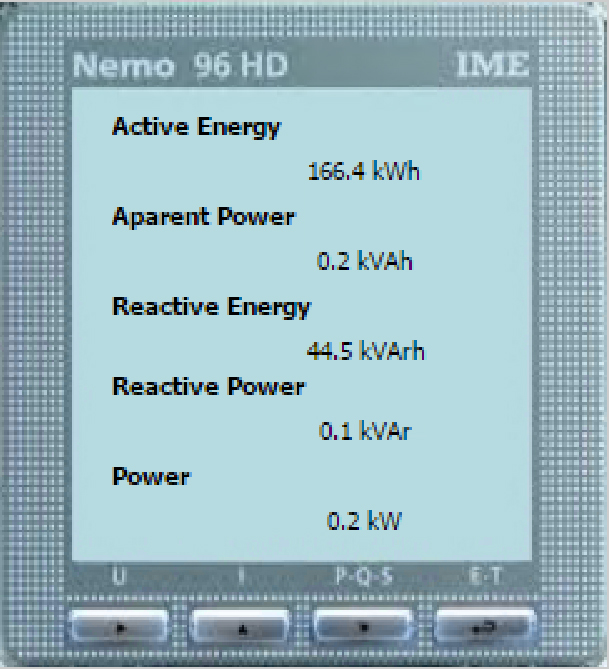Turn your buildings utility use into a meaningful story
Optergy Energy Management System

Figure 1. Numbers represented on a screen making it hard to understand and find patterns.
When all you have is a utility bill with a single number representing this month’s or quarter’s consumption, it can be extremely hard to understand what story a building is telling about its performance. As a consequence, most people end up dreading their utility bills because they have no insight until the bill arrives and it’s too late.
Sadly, many buildings have smart metering systems installed. However most of the time, the data is not being collected or is communicated to the user in a meaningless way. Take the example of a monitoring system reporting a current usage of 0.2 kW and an active energy of 166.4 kWh. When these valuable pieces of information are presented as only numbers on a screen it becomes difficult for the user to gain any real insight or find patterns. Numbers on a screen can show what’s happening live, but nobody has time to watch a screen 24 hours a day. As a result, the numbers become meaningless and an endless source of frustration as building owners revert back to waiting for their utility bills to arrive.
There is a need for a smart metering system to tell the user a story. It should report the story in real time and break it down into manageable chunks of 15min intervals (or less). It should tell the story with hourly, daily, weekly, monthly, yearly data. It should allow the user to run graphical reports comparing period on period, or usage versus ambient conditions. It should allow the user to view the building as a whole, then drill down through major load groups to end loads with a few simple clicks. It needs to allow the user to receive the story in a way that makes sense to them.
The work flow of user customisable reports.
The user has enough flexibility to tell the story in a way that makes sense to them.
By having data that is easily visualised, it becomes engaging. Once something is engaging, it becomes habit. If it becomes a habit, it becomes easy. All of a sudden what was once frustrating numbers on a screen, becomes the building owners greatest tool for utility cost reduction and improved efficiency. This system is now valuable and begins to save money through utility bills by allowing the user to visualise performance, find abnormalities and take action before the next utility bill arrives.









